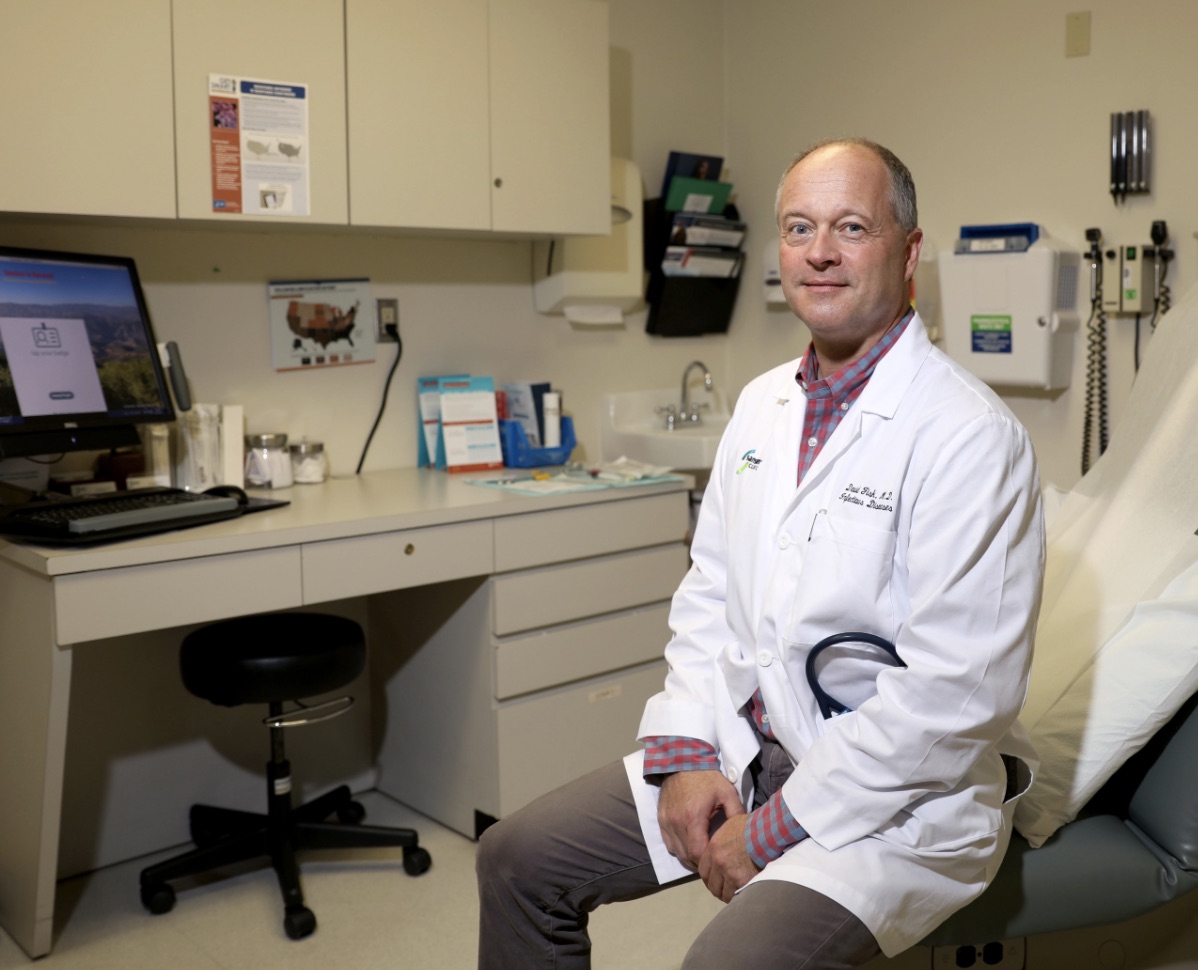Cottage Hospital Down to Six ICU Beds
Record Levels of Coronavirus in Santa Barbara County

The number 32 at the county’s COVID dashboard stands as a banner to Santa Barbara’s last hope of achieving the state’s red tier by simply wearing face masks and avoiding crowds. An inexorable rise in cases since early November peaked on Monday with 456 new cases. The six deaths reported Monday each took one of the most vulnerable among us — an elderly person living in senior care facilities in the Santa Ynez Valley, Orcutt, Goleta, Santa Barbara, and the unincorporated South County. Despite the governor’s renewed shutdown of Southern California and much of the state, our best efforts have failed. Public Health blames it on the travel and gatherings of four weeks ago; around the world, it’s become clear that the new strain of COVID-19 has adapted to be even more contagious.
The county’s ICU bed count — the state’s new marker for the coronavirus danger level — dropped today to an adjusted 0.7 percent; the actual count is 19 percent. (The adjusted rate lowers the actual ICU bed count by a half-point for every point over 30 percent occupied by a COVID patient. The hospital count indicates the prevalence of disease in the community, and the adjustment allows health officials to anticipate a surge.)
Cottage Health hit a peak for its COVID patients Monday with 79 patients, roughly half the county’s cases. It had six critical care beds left at the time. Even among Cottage’s health-care workers, despite having a COVID section at the various wards like pediatrics and the birth center, many who become infected inevitably source it to members of their households or interactions out in public.
“We are very, very proud of the safety on the COVID wards,” said Dr. David Fisk, head of infectious disease control at Cottage. A rigorous use of protective gear and special air filtration in the negative-pressure units increase the safety margin for staffers. “Personally, I feel a greater level of risk at Costco than in the COVID ward because of so many people in an enclosed area with unknown COVID status,” he said.
Get the top stories in your inbox by signing up for our daily newsletter, Indy Today.
Though the state is screening across California for the new coronavirus variant, it has yet to report a case in Santa Barbara County, Fisk said. “Typically, in any viral spread, once you find it, it’s already been around for a while,” he noted. Along with working on the logistics and planning for the cresting wave of coronavirus patients, Fisk has been tracking the new mutation. “To put this into context, we’re going to continue to see new mutants. That’s what viruses do, mutate and change on a daily basis. Especially with millions infected on a global basis, rapid changes will occur. This one will not be the last,” he said. “The encouraging news is that so far there’s no evidence it’s a more dangerous virus.”
What is driving the surge, he said, might not be the variant but other factors, among them the fact that people are relaxing their vigilance, evidenced by the millions nationwide who traveled during the holidays. “People making the choice to travel and take a risk,” Fisk said. “The hard thing to see is when those choices go bad, and how quickly we see that happen.”
The outbreaks at congregate-care facilities aren’t confined to skilled-nursing or retirement facilities. The County Jail reported its first case of transmission within the jail on December 31. Prior to that, the COVID cases had all come from inmates tested when they entered the jail or were held in quarantine. By January 2, six inmates in the general population had tested positive. Since Christmas, among jail deputies, the regular surveillance testing found six custody deputies who tested positive, four of whom were asymptomatic at the time. All wore masks while on the job, the Sheriff’s Office stated.
The real risk of coronavirus now, Dr. Fisk said, is from people underestimating the disease. Among the tests done at Pacific Diagnostics, one out of five was turning up positive. And although Cottage is preparing 87 surge beds, it only has equipment for 30 of them and no staff currently. It might come to an all-hands-on-deck approach within the entire hospital, Fisk speculated, or pulling from one area and redeploying to another.
“The risk now is as high as it’s ever been, and it may intensify in the coming weeks,” Fisk warned. “We need the assistance of the public to stay away from COVID so that hospitals, which are already stretched thin, can continue to have enough beds for those who are ill. This is the time to double down on masks and hand hygiene, and physical distancing to protect yourself and your loved ones.”
At the Santa Barbara Independent, our staff is working around the clock to cover every aspect of this crisis — sorting truth from rumor. Our reporters and editors are asking the tough questions of our public health officials and spreading the word about how we can all help one another. The community needs us — now more than ever — and we need you in order to keep doing the important work we do. Support the Independent by making a direct contribution or with a subscription to Indy+.


